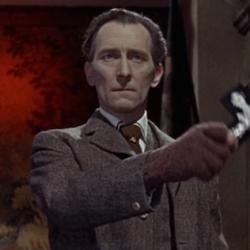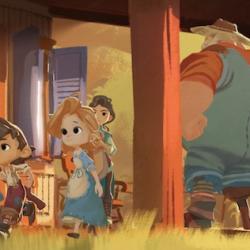Kristen Thompson devotes several pages of her Apocalyptic Dread, a study of apocalyptic in contemporary film, analyzing Spielberg’s 2005 remake of War of the Worlds. She points to the “film’s extensive references to 9/11 and terrorism as the new marker of dread in the twenty-first century.” She quotes an interview where Spielberg admits that the movie “about Americans fleeing for their lives, being attacked for no reason, having no idea why they are being attacked and who is attacking them.”
The film is full of visual allusions to 9/11: “Startling for its vivid portrait of suspenseful urban carnage, the film’s imagery includes several set pieces that specifically recall the destruction of the World Trade Center, including the clouds of clothing that float to the ground after the death rays of the aliens vaporize fleeing humans. In response to an electromagnetic pulse sent out by the alien craft, airplanes fall out of the sky. As panic rises in New Jersey and across the globe, missing posters can be seen everywhere as Ferrier [Tom Cruise] tries to keep his family safe, and people ask each other, ‘Did you lose anyone?’ In broader terms, 9/11 is also evoked through the film’s iconic images of disaster, which abound: a train that is on fire rockets past stunned survivors waiting at a railroad crossing; a river full of bodies flows past a stunned child’s eyes; a downed airplane’s wing and tail lie amid the detritus of a suburban street; and a crack in the sidewalk widens and heaves upward as a monumental spacecraft appears from under the earth” (146-7).
Spielberg changed the story so that the aliens become a “thread from within”: “Indirectly invoking American anxieties of terrorist sleeper cells, one of the film’s advertising taglines was ‘They’re already here,’ alluding to the story’s alien spacecraft that have uncannily lain dormant beneath the earth since the dawn of human existence, awaiting the signal to begin the invasion” (147). Thus, “whereas the earlier science-fiction films were allegories of similarity as part of their cold war concern with Communist infiltration, here the alien invasion is an allegory about the anxiety of proximity, alluding to the invisibility of sleeper-cell Muslim terrorists” (148).
While playing on American fears of domestic terror, Spielberg also throws a sop to skeptics. His Ogilvy character, played by Tim Robbins, “is so determined to attack an alien probe that is searching the basement that he imperils Ferrier and his daughter’s lives. His paranoia and aggression are such that Ferrier ultimately has to beat him to death, in another important change from the original story, in which the Curate was merely knocked out by the Narrator, and a Martian tentacle dragged him out and killed him.”
In short, “Spielberg has it both ways: he shows the unforeseen violence that is necessitated by Ferrier’s struggle to survive and protect his family, and yet at the same time critiques that violence brought about by militarism and invasion” (149).














